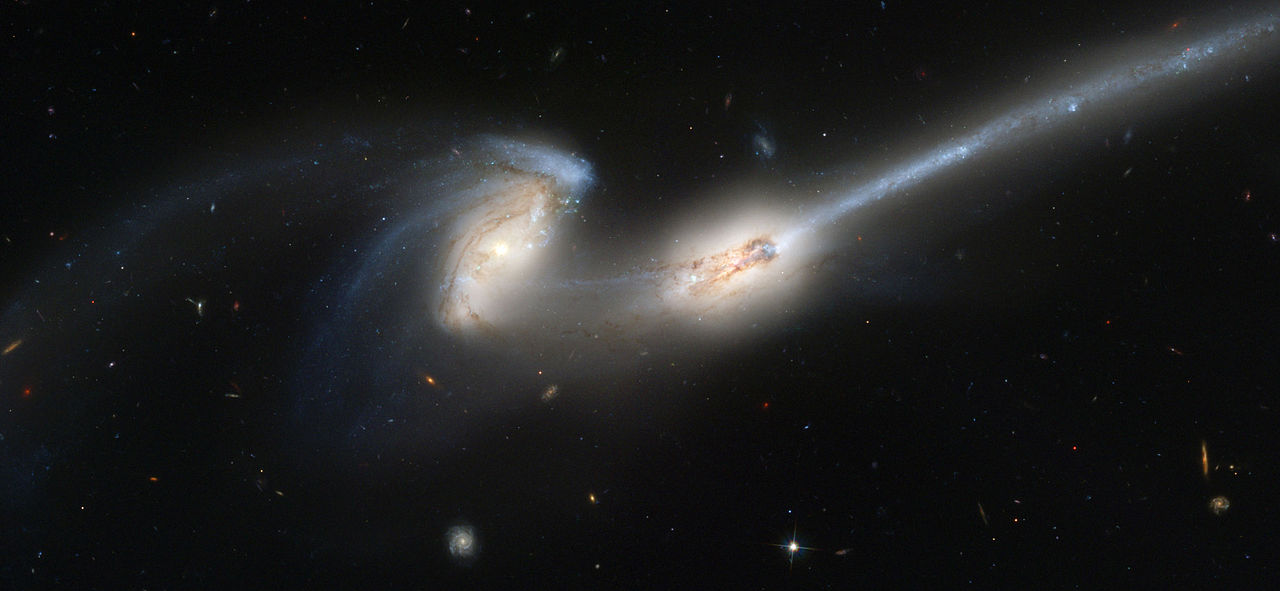
Caption: "The Advanced Camera for Surveys (ACS), the newest camera on NASA Hubble Space Telescope (HST), has captured a spectacular pair of galaxies engaged in a celestial dance of cat and mouse or, in this case, mouse and mouse. Located 290 million light-years (89 Mpc) away in the constellation Coma Berenices, the interacting galaxies have been nicknamed The Mice (AKA NGC 4676) because of the long tidal tails of stars and gas emanating from each galaxy. The pair will eventually merge into a single galaxy, probably an elliptical galaxy." (Slightly edited).
Features:
- The galaxy on the right
NGC 4676a
is an
S0 pec, where
"pec" stands for
peculiar galaxy
and "SO" for lenticular galaxy.
It seems to seen roughly
edge-on.
- The galaxy on the left
NGC 4676b
is an
SB(s)0/a pec
(i.e., either SB0 or SBa with no ring (as the (s) says) and in any case
a peculiar galaxy
and barred spiral).
It seems to seen roughly
face-on.
- The Mice
are interacting galaxies.
They are also a galaxy merger
in action: two into one probably on a time scale of hundreds of millions of years.
- The result of the merger will probably be an
elliptical galaxy
or, perhaps, a
lenticular galaxy.
- Actually, the tidal tails
do NOT seem that obvious to yours truly's untrained eye.
The Antennae Galaxies have much more obvious tidal tails.
- How do interacting galaxies interact?
- Primarily through gravity.
The stars
are affected practically only by gravity.
The forces of
interstellar medium (ISM)
and magnetic fields
on the stars are probably very small.
- The interstellar mediums
of the
interacting galaxies
do interact through the
pressure force
and magnetic fields.
- Stellar collisions
(body-on-body collisions of
stars) are negiligible.
Probably NOT even two field
stars will
collide in
galaxy collisions
(see Wikipedia:
Stellar collisions in galaxy collisions).
But if two globular clusters collide the probability of stellar collisions is higher since globular clusters have very high density of stars. Yours truly does NOT know what that probability is.
But even if it is highish, stellar collisions are still negligible overall in interacting galaxies.
- Primarily through gravity.
The stars
are affected practically only by gravity.
The forces of
interstellar medium (ISM)
and magnetic fields
on the stars are probably very small.
- For interacting galaxies
explicated, see
insert
interacting_galaxies.html
below
(local link /
general link: interacting_galaxies.html):
- EOF
- See galaxy videos below (local link / general link: galaxy_videos.html):
Local file: local link: galaxy_mice.html.
File: Galaxies file: galaxy_mice.html.